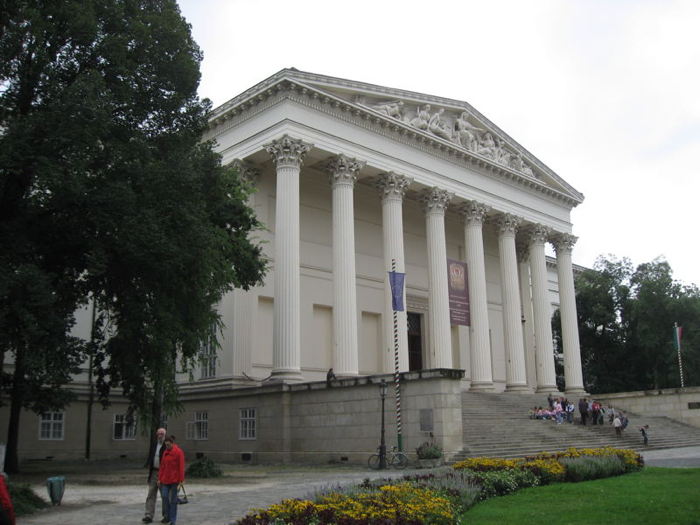Hungarian National Museum
Budapest Building Photos Thumbnails Buildings Home
|
Hungarian National Museum
The Hungarian National Museum is said to have been founded in 1802 when Count Ferenc Széchényi set up the National Széchényi Library. This would then be followed a year later by the donating of a mineral collection by Széchényi’s wife. This led to the creation of the Hungarian National Museum as being a natural history museum, and not only a library. In 1807 the Hungarian National Parliament passed legislation on the new institution and asked the nation to help donate to the museum. The Hungarian Parliament of 1832- 1834 helped with the growth of the museum as well. This parliament voted in favor of giving half a million forint to help with the construction of a building for the construction of a new building for the museum. During this time the Hungarian National History Museum was officially set up under the Hungarian National Museum. Later in 1846, the museum moved to its current location of VIII. Múzeum krt. 14-16. Here the museum resides in a neo-classical style building designed by Mihály Pollack. In 1848 the Hungarian National Museum played a major role in the Hungarian Revolution. The Revolution was partially spurred by the reading of Sándor Petőfi’s 12 points and the famous poem Nemzeti dal on the front steps of the museum. This helped give the museum an identification as a major national identity for Hungary. In remembrance of the revolution two statues were added to the museum. The first is a statue of János Arany which was unveiled in 1883. Later in 1890 there was a statue next to the stairs of the museum of a memorial tablet to Sándor Petőfi. In addition during this time the Upper House of the parliament held its sessions in the Cereminial of the museum. This continued until the new house of Parliament was built. Today in remembrance festivities for National Commemorations Day of 1848 are held in front of the museum. Photo 1882, May 2013 |

|